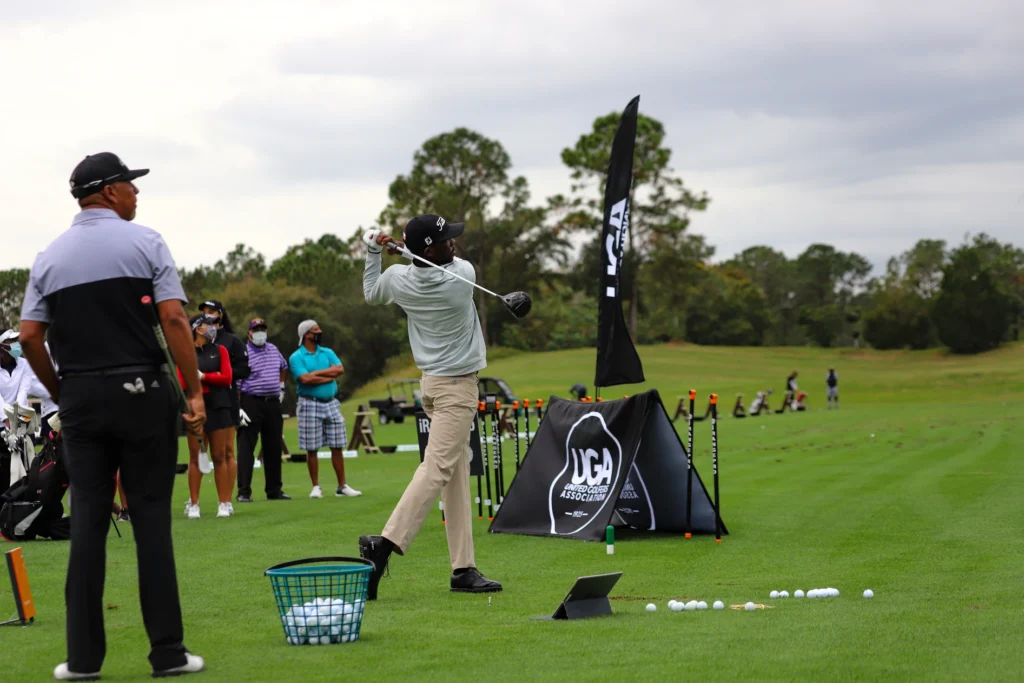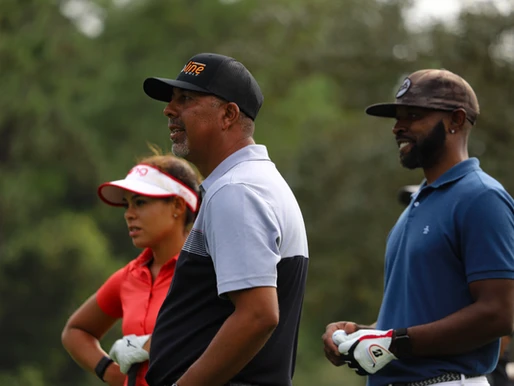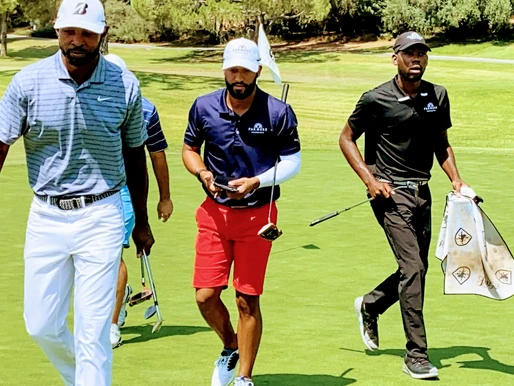Andy Walker, one of the 29 black players to ever compete on the PGA Tour reflects on the broken pipeline for African Americans in the sport, and shares the vision for what he sees as the way forward through the resurgence of the United Golfers Association.
There were just a handful of us, four or five on the Official World Golf rankings at the height of my professional career. It felt great to be inside the ropes, making a living playing golf and traveling around the world. For all intents and purposes, I had made it to a level higher than most of my peers, yet every so often I was confronted with the added ‘tax’ many people who look like me experience as less-than-subtle reminders of our blackness. At best, it was the assumption I was a caddie when I checked in at player registration, and at its worst it was being pulled over while driving to a tour event and held at gunpoint by police who assumed I had stolen the courtesy car. Try teeing off after an experience like that when your heart is pounding in your ears.
Things were supposed to be looking up back then for Black people in golf. Tiger was dominating the game and gave golf’s leaders confidence that he’d usher in more Black players to the sport and the grassroots programs they’d invested in. While their intentions were genuine, the numbers don’t lie. There’s still a mile between where the representation of Black people in golf is today and where it should be. We make up only 3% of recreational players, less than 6% of college golfers, and not even 1% of golf’s workforce. Even today, there are only five Black players competing full-time on the PGA and LPGA Tours combined. A sport historically intended to be enjoyed by wealthy white men, which to be fair is a shared history for just about every recreational sport, golf has been one of the slowest to evolve its culture by welcoming in the groups of people left on the sidelines.
Surprisingly, the only time the sport had a steady stream of Black golfers playing professionally was between the 1930’s and 1960’s, another social and political flashpoint in our country. Before Jackie Robinson stepped foot on the baseball diamond of major league baseball, the Black players of the United Golfers Association were quietly desegregating golf. UGA tournaments and exhibitions were hosted across the country and had support from civil rights leaders and influences including Joe Louis and Sammy Davis Jr. Nearly every African-American who competed on the PGA and LPGA tours found a home in the UGA, which successfully integrated black players into the mainstream tours before eventually dissolving in 1976.
In April of 2020, my longtime friend Ty DeLavallade and I commiserated about golf’s broken pipeline for Black people. He was tired of playing courses and only seeing Black people in the kitchen or mowing greens and not behind the Pro Shop desk or teaching on the lesson tee, and I knew how he felt. After being one of a handful of Black men playing the pro circuit, I had focused my career on teaching, coaching, and trying to help more Black players climb the ranks. Seeing players chasing their dreams but struggling to break through under the pressures and financial strain of pursuing a career in golf was unbearable. We realized that golf needed the United Golfers Association again, but not as it existed in the past.
We spent the remainder of the year building the plan and generating support. With my 40 years of insight into the industry and the relationships I’d built coupled with Ty’s business acumen and entrepreneurial spirit, we began laying the groundwork for the most intentional effort to diversify golf in our sport’s history through the resurgence of UGA. We know for Black folks who want to play, work, or compete in golf, the issue isn’t a lack of interest or effort, it’s the gap in information, resources, role models and support they need to help them get where they want to go. I’d never discount anyone’s struggles in this game, but Black people carry a different weight and are confronted with a unique set of pressures in golf.
Often when I explain our vision for the UGA and the UGA Academy, the most common response I get is “Man, that’s a big project”. But the reality is this isn’t something novel. It is a similar model used by national teams from Mexico and South Korea to develop their top players, and there have been many golf initiatives launched to stir up genuine interest in the game among women and girls. The underlying sentiment with those raised eyebrows is that this is something new for us. And it is. Ty and I like to say that we’re building Wakanda for golf; we’re only partly joking.
The curiosity in how ambitious our plans are doesn’t phase us. We know we are building the foundation that will move the needle forward for the long term. The Black community and advocates who support the mission are already answering the call by becoming UGA members and wrapping their arms in support around the young men and women pursuing their dreams at every level. Consequently, our first event brought in 64 pro-am players from across the country to celebrate. With their support we’re bringing the vision to life, from establishing scholarships, to supporting grassroots programs, and bringing back the UGA National Championship—the centerpiece for bringing in family, friends, juniors, and professionals together to compete.

Similarly to what the Mexican and South Korean national teams have built, the UGA Academy will offer a brick and mortar academy to give Black golfers a state-of-the-art training facility and access to a course that mirrors what they’d experience on tour—slippery greens, tight fairways and a challenging layout. There are plenty of folks who can teach someone to swing pretty, but not everyone can help a player shoot a 64 in a tournament when their nerves are shot and they have $100 to their name. We will create a space where players have no choice but to be successful and can learn from instructors who know how to compete on tour, score, and win because they have been there themselves.
The exchanging of knowledge won’t stop at coach and student. We will open our doors to collaborate with the other talented Black golf instructors currently teaching in pockets across the country. We will create a think tank environment, sharing the latest in biomechanics and sports psychology, so collectively we can help students shoot even better scores. It will become a network that breeds research and development and a place where companies in the golf industry will come to learn and find the next leaders of their organization. And all those grassroots junior golf programs reaching kids in Black communities who are relying on volunteers will have a resource in the UGA to help train their coaches and leaders so the juniors have better support. Is it a big undertaking? Yes. But the reward of having built a stronger foundation for black golfers for generations is immeasurable.
This past year has no doubt exposed the fractures in our society, and golf is no different. But there has also been an awakening, including inside golf’s governing bodies. This time things feel different, and golf’s leaders seem committed to making lasting change. We are ready to work with them. There is an understanding that we’re all being called to lift up the ropes and let other people in, that for this to work we’ll have to expand on that old African proverb “it takes a village” because this time it will take all of the villages. We can’t afford to wait another 60 years to try again.



